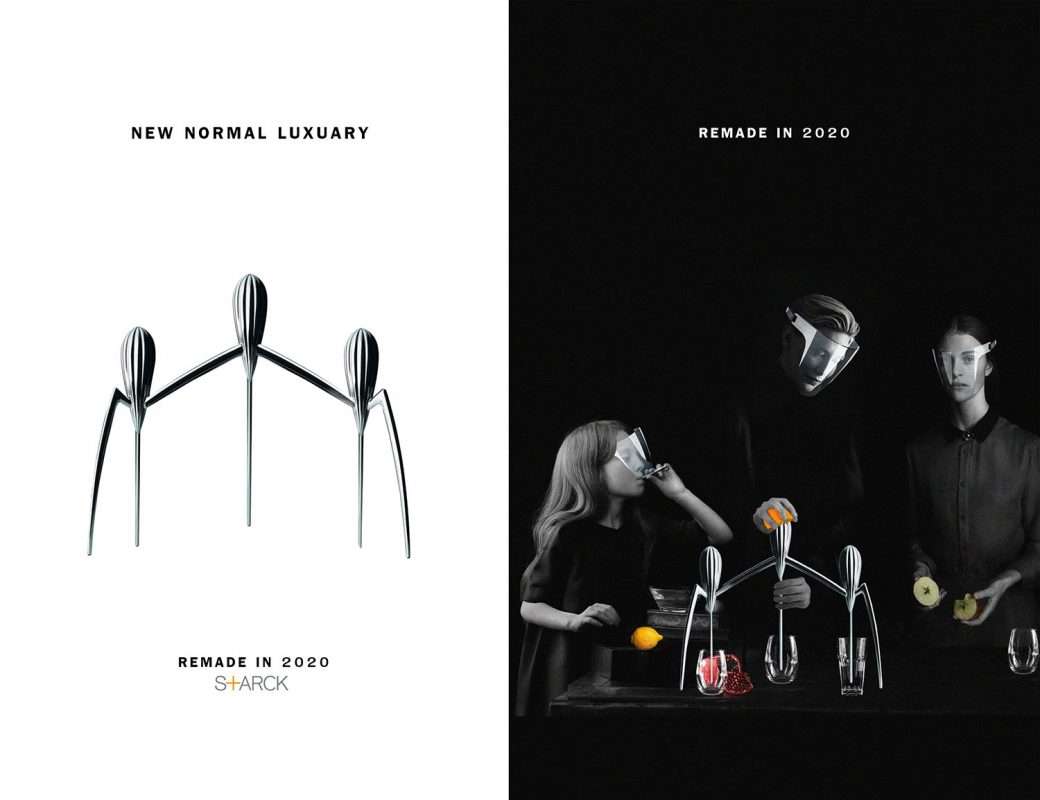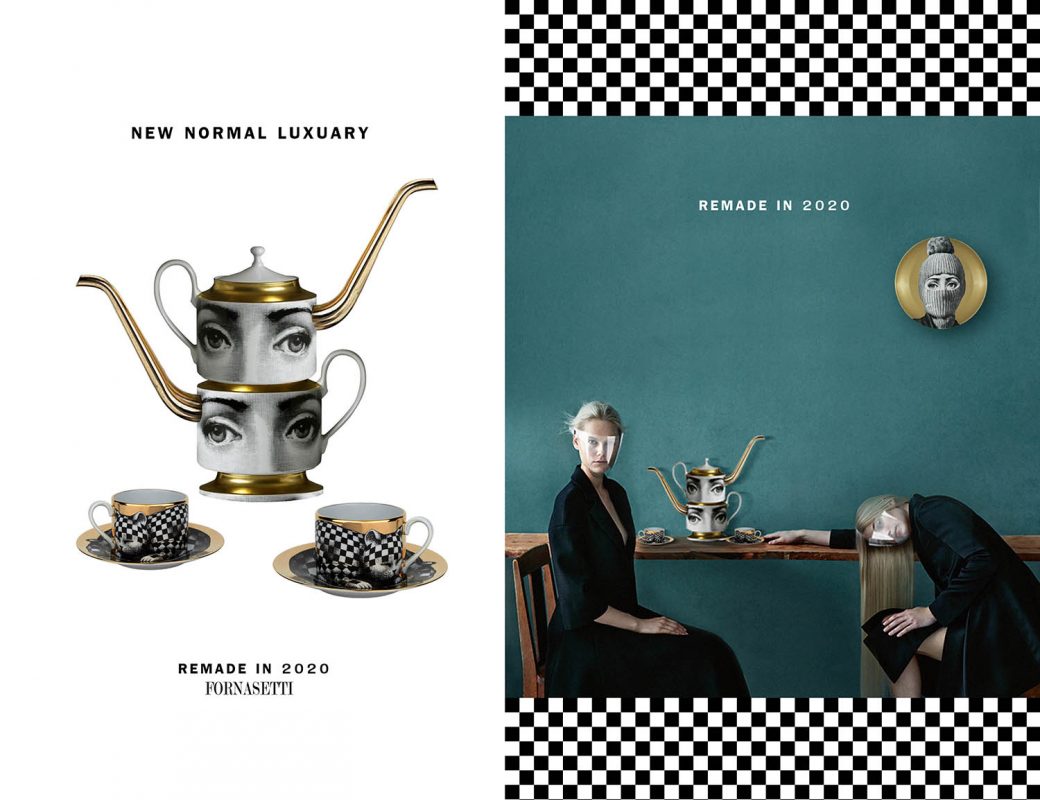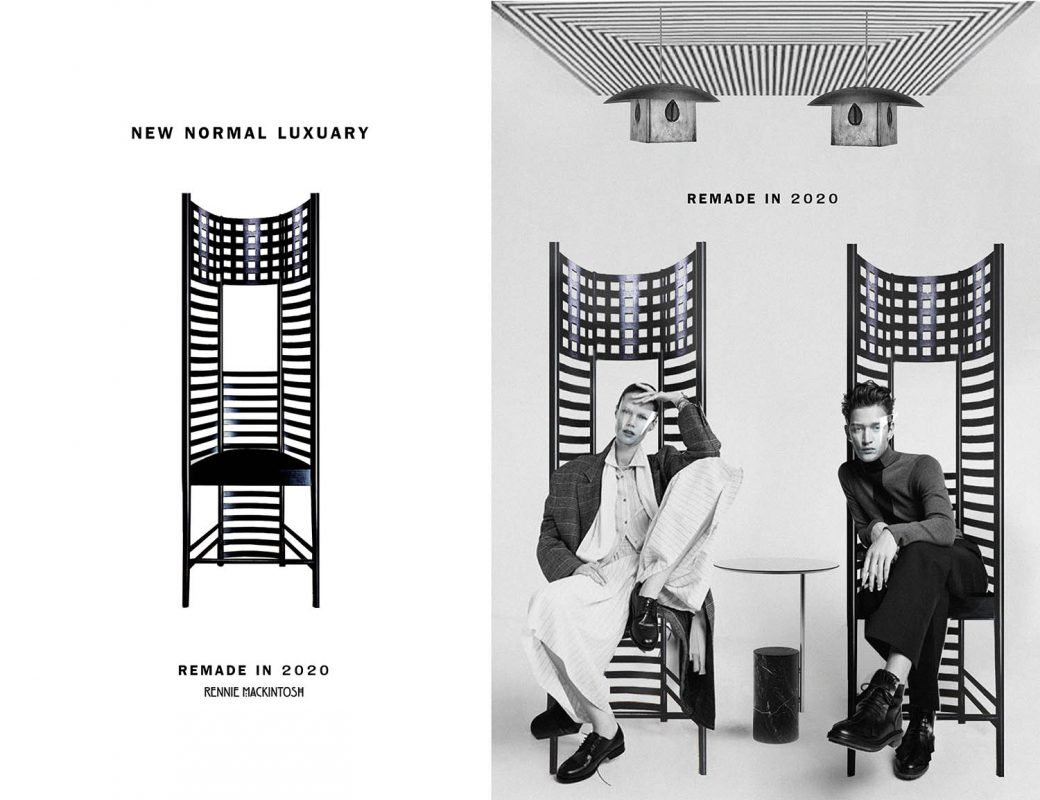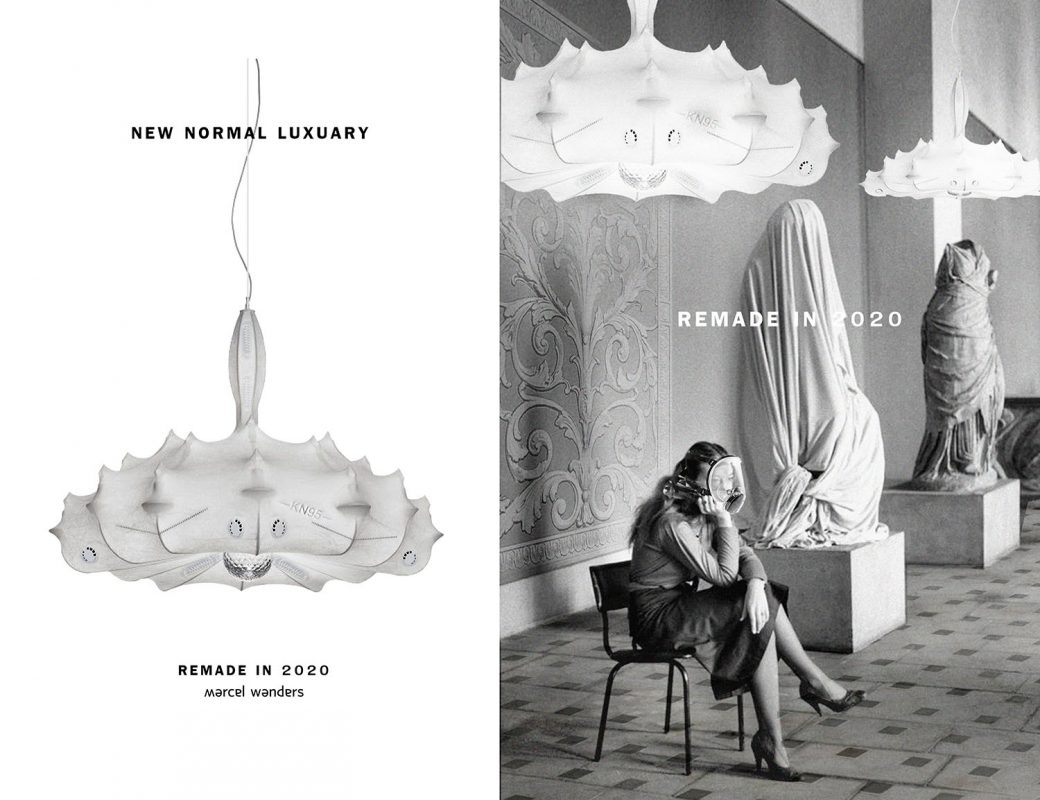DESIGN FROM HOME
NEW NORMAL LUXURY: REMADE 2020
เมื่อพูดถึง ‘ชีวิตวิถีใหม่’ (New Normal) และ ‘หลังการระบาดใหญ่’ (Post Pandemic) นักออกแบบและคนในวงการออกแบบจำนวนมากต่างก็ได้ใช้เวลาคิดถึงการฟื้นตัวระยะต่อไป และหลายๆ สิ่งที่การออกแบบและศิลปะจะทำเพื่อเศรษฐกิจโลกได้ ผมคงจะไม่อวดฉลาด ชวนสนทนาเรื่องธุรกิจและการรับรู้ของสังคมในอนาคตกับความหมายของชีวิตวิถีใหม่ หลังจากได้นั่งคิดในช่วงกักตัวเรื่องระยะต่อไปของการฟื้นตัวด้านการออกแบบ ผมก็ได้สังเกตว่ามีงานออกแบบโดยนักออกแบบผู้ยิ่งใหญ่ที่ผมสะสมไว้ในอพาร์ตเมนต์ ส่วนใหญ่มีค่าความแข็งแรงด้วยความที่เป็นงานชิ้นเอก ซึ่งสะท้อนให้เห็นทั้งประสบการณ์การใช้ คุณภาพทางสุนทรียะ สิ่งที่ชื่นชอบ และประโยชน์ใช้สอย นอกจากนั้นนักออกแบบเหล่านี้ยังคงสร้างงานออกแบบที่ประสบความสำเร็จในตลาดอยู่ เมื่อช่วงเวลาอันไม่แน่นอนของการระบาดเปลี่ยนแปลงและส่งผลกระทบต่อเราทุกคน การนำงานชิ้นเอกเหล่านี้มาปรับคิดใหม่จึงน่าจะเป็นประโยชน์กับความต้องการที่เปลี่ยนไปของผู้บริโภคในอนาคตด้วย งานเหล่านี้จะยังขายได้หรือไม่ เมื่อความหมายของการออกแบบและวิถีชีวิต ‘luxury’ นั้นเปลี่ยนไป
ผมทึ่งเรื่องความประณีต ความยืดหยุ่น และโอกาสที่เป็นไปได้ในการพัฒนางานออกแบบบางชิ้นที่อาจจะเป็นจุดเริ่มต้นของแนวคิดเรื่อง ‘New Luxury Remade in 2020’ ผมเลือกงานออกแบบสี่ชิ้นของนักออกแบบสี่คนจากสี่ยุคและสี่สไตล์ มาตั้งโจทย์กระตุ้นให้วงการออกแบบคิดเรื่องการผลิตซ้ำใหม่ โดยคำนึงถึงเรื่องการรักษาระยะห่าง สุขอนามัย และการใช้สอยหลายครั้งในครัวเรือน อันได้แก่
1) Juicy Salif ของฟิลิปป์ สตาร์ค (Philippe Starck) เครื่องคั้นมะนาวที่ปฏิวัติวงการปรับใหม่ให้ใช้งานได้พร้อมกันทั้งครอบครัว เพื่อไม่ใช้มือเปื้อนเชื้อโรคและป้องกันการแพร่ระบาด ที่คั้นทั้งสามอยู่ในตัวเดียวกัน แต่รักษาระยะห่างระหว่างผู้ใช้งานได้
2) Teapot for 2 ของฟอร์นาเซ็ตติ (Fornasetti) ปรับใหม่ให้นำการพบปะสังสรรค์จิบน้ำชายามบ่ายกลับมาอีกครั้ง หูกามีสองด้าน พวยกายาว รักษาวัฒนธรรมการดื่มชาร่วมกันไว้ได้ ในขณะเดียวกันผู้ดื่มชาทั้งสองก็สัมผัสพื้นผิวร่วมกันน้อยลงและอยู่ห่างกันในระยะที่เหมาะสม
3) Hill House Chair ของแม็คอินทอช (Mackintosh) ในระยะหลังนี้นิยมใช้เป็นเก้าอี้รับประทานอาหารกันมาก แม็คอินทอชออกแบบมาให้เป็นของตกแต่งมากกว่าของที่ใช้งานจริง เมื่อพิจารณาหลักเกณฑ์ต่างๆ ในการรักษาระยะห่างแล้ว ผมตั้งใจจะปรับพนักโดยเพิ่มฉากกั้น คงเอกลักษณ์ศิลปะใหม่ (Art Nouveau) ไว้ ในขณะเดียวกันก็รักษาระยะห่างเพื่อใช้ในการรับประทานอาหาร
4) Chandelier ของมาร์เซล วานเดอรส์ (Marcel Wanders) โคมไฟประหลาดนี้เน้นความล้ำยุค (avant-garde) มากกว่าประโยชน์ใช้สอย ผมได้แรงบันดาลใจจากหน้ากากอนามัยและแผ่นกรองฝุ่น ปรับให้งานสนุกขึ้นและใช้งานในครัวเรือนได้จริง แผ่นกรองเชื้อไวรัสและละอองฝุ่น PM 2.5 เป็นโครงสร้างที่หุ้มโคมไฟ ซักและเปลี่ยนได้
เรียงความนี้เป็นสิ่งที่ผมขอนำมาร่วมพูดคุย ความคิดที่ได้จากการออกแบบงาน ‘luxury’ อาจเป็นหนทางที่งานบางชิ้นจะคงคุณค่าอยู่ได้ในระยะยาวหลังจากการระบาดใหญ่ ทั้งผู้จำหน่ายสินค้าและนักออกแบบอย่างพวกเราน่าจะช่วยสนับสนุนการคิดในเชิงบวกในสมัยของความท้าทายและวิกฤติเช่นนี้ ผมเชื่อแน่ว่าการยอมรับพฤติกรรมที่เปลี่ยนไปในสังคม การทำความเข้าใจทัศนคติทางวัฒนธรรม และการปรับตัวให้คิดไปข้างหน้าจะช่วยจุดประกายนวัตกรรมและความคิดสร้างสรรค์ได้

When it comes to the terms of ‘New Normal’ and ‘Post Pandemic’, many designers and people in the design industry have been thinking about the next phase of recovery and what the design and art can do coming back in different aspects to global economy. I’m trying not to be clever to raise the conversation about the future business and society perception versus what is the new normal. After sitting back during quarantine and wondering about the next phase of design recovery, I have noticed that there are few product design items from the well-known and great designers I collected in my own apartment. Most of them have a strength value as they are design masterpieces of all time which not only reflect the individual experience use, aesthetic quality, preference and functionality but whose designers have made successful design in the market. When the uncertain time of pandemic changes and impacts us all, perceiving these design masterpieces by famous designers differently, versus lifestyle products, can be useful for different needs of customers in the future. Will they be able to sell if the sense of luxury design and lifestyle change?
I am intrigued about refinement, flexibility and possible development of chosen design products that may well be the potential beginning of possible notion of ‘New Luxury Remade in 2020’. I have made 4 choices of design by 4 designers from different eras and styles to explore my challenge and to provoke the industry to question ideas of reproduction regarding rules of social-distancing, hygienic concern, and multiple domestic use as follows:
1) Juicy Salif by Philippe Starck: as revolutionary as the former citrus squeezer, refined to be shared function for the family. To avoid the hand contamination and increasing possibility of contagion, the triple squeezer is built in one unit and yet keeps the distance between the users.
2) Teapot for 2 by the original Fornasetti is also refined to bring back the socialising for afternoon tea occasional use. A pot can be held with the two-side handle with the long spout which offers shared togetherness of tea culture, refined and yet with less contact to maintain the appropriate distance between the two.
3) Hill House Chair by the original Mackintosh: this well-known chair is the popular choice for dining chair in recent years. It was conceived by Mackintosh more for decorative intention than purely for function. Regarding the social distancing rules, I intend to adjust the original back rest by adding side screen, continuing the bold Art Nouveau’s feature while securing the seating distance for dining use.
4) Chandelier by Marcel Wanders: the whimsical chandelier is provoking the sense of avant-garde more than function. I’m inspired by face mask and purifier/filter to refine the original one to be more fun and functional for domestic use. The virus and PM2.5 filter features as fabric skin of the lamp. The wrapped fabric is also washable and replaceable.
This personal statement is only my contribution to the discussion. Takeaway from ‘luxury’ design could be the way in which some of them survive in long-term after the pandemic. Retailers of all products and us designers should encourage the positivity in times of challenge and crisis. I am sure that by recognising the society’s changing behaviours, understanding cultural attitudes and adapting to forward thinking intelligence will prove to spark innovation and creativity.
fb.com/studiokindness
studioactofkindness.com




